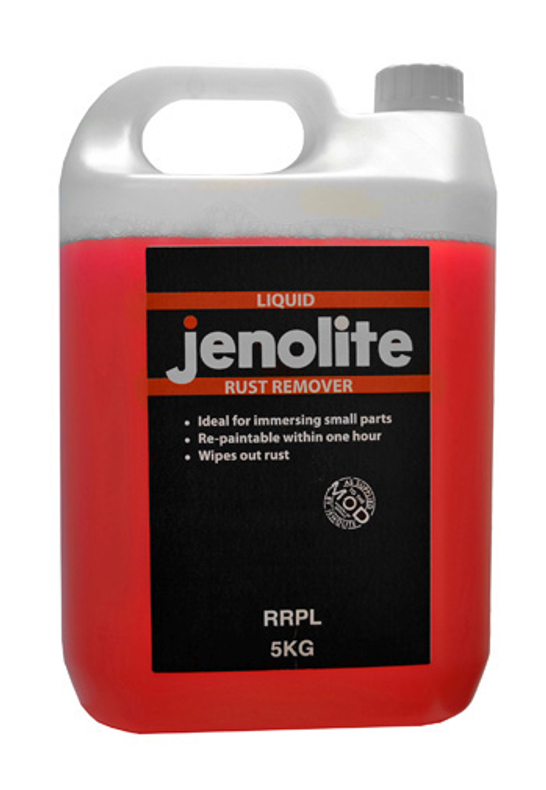Corrosion is the deformation of metal, steel, iron and other materials as a direct result of it's interactions with the environment. Rust is a side effect of corrosion in iron based metals. Not all metals will rust, but that doesn't mean they don't corrode. For example, copper, brass and aluminium will not rust but they do corrode.
Vehicles, particularly older models and classic cars are known to rust to the undercarriage, framework and within cavities - any bare metal when exposed to air and water will rust. Salt and acid rain will speed up the process.
There are basically three rust remover categories for dealing with this force of deterioration to classic cars. Mechanic rust remover prepares surfaces for application of a rust converter and chemical rust removers are ideal for small surface areas of rust.
Mechanical rust remover
- This is a achieved with the use of an angle grinder. Sanding discs attached to remove heavy rust.
- Metal wire brush is a popular means of rust remover from metal surfaces. This method uses an abrasive force to remove rust. This method is used to remove all loose rust flakes prior to the application of a rust converter.
There are some 'pit' falls to the use of an angle grinder as a rust remover. It is the right tool in certain circumstances such as to remove deep or structural corrosion. But if you attack superficial or surface rust with an angle grinder, then you risk removing non corroded material as well. It can also leave you with a pitted surface that you either have to use a refiller on or cut out and replace.
A rust converter is useful to treat areas that you used a mechanical means to remove heavy surface rust.
Media Blasting
- Achieved with the use of an air compressor and an abrasive medium.
Non-mechanical Rust Remover
A rust remover is applied to the affected area to banish rust from the object being treated - with no chemical process involved.
The oxalic acid in a rust remover reacts with iron oxide (rust) causing it to separate away from the metal surface. Once the rust has disappeared you are left with a stable surface for priming and painting.
Jenolite Rust Remover can be used to remove light films of rust left after sandblasting. It can be used to de-rust by immersion and wiped dry immediately afterwards. Good quality primers are recommended afterwards.
- Jenolite liquid formulation - quick and very easy to use. Removes rust back to bare metal. Ideal for immersing small parts, box sections, tubular sections and fine detail. A 1 litre Jenolite liquid covers an area of 8 square meters and ready to prime in just 30 minutes.
- Jenolite gel formulation - a concentrated non-drip gel is a handy choice for treating for small areas of rust on cars, bikes, household appliances, and gardening equipment. You can also use it to clean rust spots off chrome plating prior to lacquering or polishing.
- Rust converter - is designed for use on medium to heavy areas to frameworks, vehicle underbody components and cavities.
Dintrol RC900 rust converter requires rust to chemically activate. After curing and converting the rust it will leave an inert surface ready for a primer or top coat application. Solvent free rust converter based on co-polymer latex combined with organic chelating agents.
- Converts rust on a ferrous substrate into a stable organic iron complex.
- When dry forms an impermeable barrier to oxygen and moisture effectively sealing out further corrosion.
- Provides long-term resistance against corrosion and abrasion
- Dries leaving a film for good adhesion for rust prevention products, topcoats and fillers.
- Does not contain phosphoric acid or lead.
- Touch dry after one hour and full drying time between 2-6 hours depending on temperature, humidity and ventilation.
Further details on applying Dinitrol rust converter, can be found in this article - How to apply DIY rust converter with lasting results
Jenolite rust converter is a water-based chemical solution and contains two main active ingredients including phosphoric acid. The other ingredient added is an organic polymer, which serves to provide a protective primer layer. Phosphoric acid converts iron oxide (rust) into an inert layer of ferric phosphate, which is black in colour. This inert layer then acts as a barrier layer or protective coating against further rusting.
Jenolite rust converter can be used on a range of rusted metal surfaces: vehicles, trailers, industrial equipment and machinery, farming equipment and domestic outdoor fittings and fixtures. It is not recommended for deep rust and all applications should be followed by a primer and paint to seal out moisture and oxygen.
Dinitrol HS 3125 - A specially formulated wax which penetrates rust and dirt preventing further corrosion. Dinitrol HS 3125 is designed for application mainly as a cavity protection and a thin underbody coating. Main objects to be treated are vehicles with some corrosion present.

